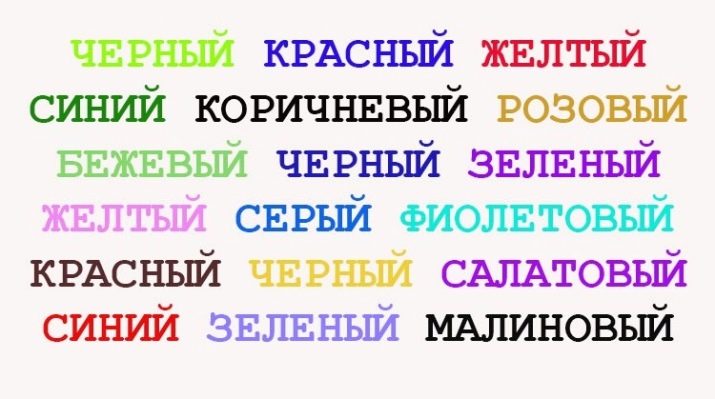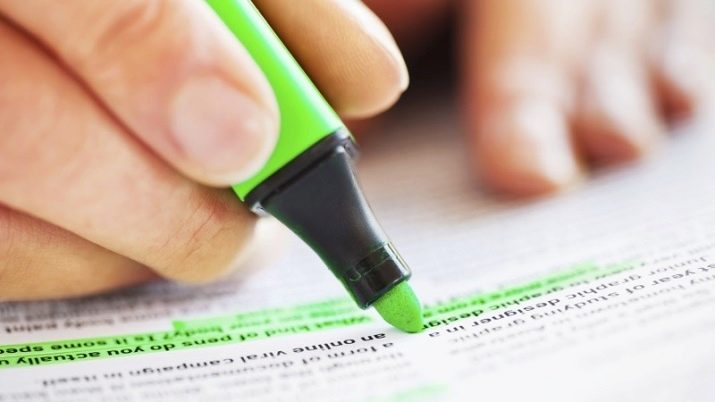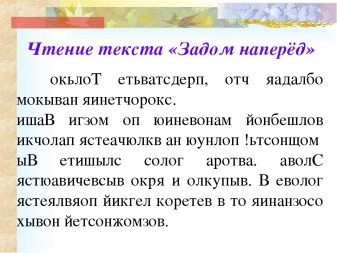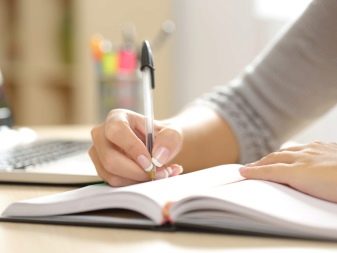Reading is the greatest ability, a complex psychological process, 100% mental work. It may seem easy from the outside, but if you look at how difficult it is for reading lessons for kids, how hard a person learns the skill after suffering injuries and impaired brain function, it becomes clear that this is a lot of work.
The motor, auditory and visual centers of the frontal lobes of the cortex, as well as the speech zones of the dominant hemisphere, are synchronously involved in reading.
Features of fast reading technology
Speed of reading is not just a desirable quality for many people, but also an excellent psychophysiological test. To turn black-and-white icons into meaningful information, the brain strains, decodes the symbols. The more a person reads, the more this process accelerates. It takes the smallest fractions of a second for people with fast reading, but people with poor reading skills have to pronounce words to themselves.
Knowing that even intellectual games (for example, chess) do not exceed reading in the efficiency of the thought process, I want to read quickly, a lot, literally grabbing information on the fly. And this really can learn.

Fast reading is a skill that is achieved primarily by practice. And you need to start training it with a simple action: do not speak words to yourself, but simply glance over the lines with your eyes. At first it seems difficult, it is difficult to follow the meaning, but gradually everything falls into place.
And (there is no way to get away from this) fast reading is connected with the quality and quantity of reading. If you open a book once a week, do not expect high results.
Experts give the following tips for accustoming yourself to reading:
- read in the transport, in the queue to the doctor, in the bathroom, in the kitchen, while the soup is being cooked - so you do not just spend the downtime, but spend it with benefit;
- telephones and computers - the same books, electronic "readers" may not like visually, according to feelings, but the principle of information flowing into the brain is the same;
- Do not be lazy to re-read books, return to your favorite works of youth;
- don’t try to overpower the list of “100 books that everyone should read”, it’s just a race, the quality of reading with it can greatly suffer;
- be sure to read any poetry (but better - good), it develops memory, makes the brain work even more intensively and psychoemotionally affects a person well.
In a word, the first step to quick reading is reading. Replace endless social media surfing with a good book and you won’t turn your brain into an information trash.

Basic techniques
Fast reading is necessary in order so that you do not spend much time on one book, but can read a whole pile of useful and interesting works in a month. And if you still begin to read several books in parallel, then, relatively speaking, write a golden card to the brain in the “intellectual simulator”.
There are a lot of speed reading techniques: you can start with any that is most attractive to you. The basic rule is to read every day. You can work with dynamic reading, with diagonal reading - each technique involves a number of simple tricks. They allow you to read the text quickly and with understanding.

Increase your reading pace.
The first step is to suppress subvocalization. You may not read the text aloud, but inside yourself you still pronounce it. If you ask you to read a passage in 1 minute, you are unlikely to be able to pronounce more than 180 words in that time. But when the speed of perception of alphabetic information increases, then you will not be able to quickly pronounce words, and subvocalization will be an obstacle to the teaching of speed reading.
How to get rid of the internal pronunciation of the text:
- while reading, just press your tongue to the sky;
- clamp the tip of the pencil with your teeth;
- apply a finger to your lips.
It takes time to master this skill, but watch how you read every day.
The next step is the rejection of regressions. This means that you should not return to the read fragments. The easiest way to do this is to lead along the lines with your finger (as in the first grade). Readers can have special programs that highlight text with color. Over time, you will realize that the following text will help the brain fill in the gaps if you missed something on the previous pages.
To increase the pace of reading helps to increase concentration. And it also trains very well. A simple example: print the names of the colors on a sheet, but to “confuse” the brain, highlight them with other colors. For example, type the word “red” in blue and the word “white” in orange. And the training of concentration of attention lies in the fact that you need to name aloud not the word, but the color with which it is printed.
Special applications that develop peripheral vision are also useful in increasing the rate of reading. You need to train on just one line, there at different speeds there are words with a letter highlighted in a certain color in the middle. So a person learns to perceive the whole word.

Give up bad habits
Reading is a job. She may be pleasant, fascinating, inspiring, beloved, but she still remains a job. Learning to read quickly is possible only with a high concentration on the target. And the main enemy along the way is the habit of being distracted.
What prevents reading:
- multitasking - if you read, then you don’t need to climb social networks, look at instant messengers and get distracted by coffee too often;
- linking the reading ritual to food, for example: of course, you will pick up the book more often if you do this in the process of absorbing food, but it is better not to form such associative connections (it is dangerous for the figure, and the reading quality suffers);
- poor conditions - inadequate lighting, uncomfortable posture, later in the day leads to the fact that you feel worse and this forces you to pick up a book or "reader" less often;
- lack of pleasant rituals - for starters they are necessary, it can be a burning aroma candle, comfortable pajamas, silence in the house.
Will help you and reading diaries. Get yourself a beautiful notebook in which you will be a literary critic.
Write a little about each book you read: impression, emotions, strengths, your thoughts. This fuels the interest in reading and, again, pumps the brain.

Change the way you read
You can view the material before reading. This will form an idea of the content of the text and even become an assessment - whether you undertake reading. And to preview the material, try reading the entire first paragraph, the first sentence of each next paragraph, and the last paragraph as a whole.
How else to change the reading method:
- pay attention to headings, highlighted words and bulleted lists - this does not give a full understanding of the text, but it structures well, a plan for reading important points is already being formed in your head;
- look for the main words - isolating keywords helps to capture the essence of the material without being distracted by details (when studying large volumes of information for an exam or offset, this is a very valuable skill);
- skip the parts of the text that you already know;
- connect the ideas of the text with those things that you already know;
- use a highlighter when reading (this applies mainly to educational literature).
By highlighting the words in the text, you can restore its meaning, main thoughts, and this will be an excellent support when answering the exam.

Tim Ferriss Method
Tim Ferriss - the author of the book "How to work 4 hours a week ..." - has developed a technique that increases reading speed by 3 times. And the whole technique, in fact, consists of two defining techniques.
- Pencil. It's simple - while reading, you use a pencil that helps to keep track of the text and which sets the pace. This helps not to jump over the lines, not to return to what was read (rejection of regression).
- Not at first. Start each new line in the text not with the first, but at least with the third word. And finish reading the line also three words before it ends. Try to think up the rest of the words using the context, or better yet, capture them with peripheral vision. Even if at first the meaning escapes, persevere further - the eyes need to be adapted to a new reading speed. Over time, understanding will come.
It is noteworthy that the first technique helps to master the second. Untrained readers, Ferriss assures, spend a lot of time reading in the fields. And they spend 20% of their reading time on a section of a page with zero information.

Exercises
Reading fluently, easily, carefully, maintaining the rhythm - this is a wonderful goal. It is suitable for an adult, but schoolchildren can also try to train the skill.
There are 10 great exercises for speed reading.
- Reading with a pointer. The pencil method is basic, so you can’t get away from it. And in order not to feel like a schoolboy (if you are not a schoolboy), replace the pencil, for example, with a sushi stick, a brush, a skewer. This simple exercise boosts reading speed.
- Green dot. In the center of the page with any text, draw a green dot, look at it for 10 minutes. Mentally imagine this point even before bedtime, even closing your eyes while lying in bed. And do this concentration on the point daily for 7-10 days. After that, start looking at the text that surrounds the point. You do not need to read the words - just see them.
- Read upside down. Fun children's fun trains the brain perfectly and promotes speed reading. Try to read the sentence first, then the paragraph, then two.
- Print any unfamiliar text. Seal its individual places (small, not wider than 1 cm) with colored stickers. Read the text to yourself, restoring it in your mind. In the next lesson, glue more fragments already.
- Map the text in your mind. To do this, just quickly skim the page, take a look around it. Your brain has already begun to remember the text.
- Before storming the text, remember everything that you already know on this topic.. The only interesting thing is that it is already comparable with experience, with the available information. Therefore, interest must be aroused by a preliminary assessment of existing knowledge.
- Take any text, draw a wavy line on the page (two bends). You can help the eye movement while reading with a pointer. When there is a feeling that the eye is able to catch most of the words, the general line can be straightened.
- Read without short words. There are such simulators: automatically the program removes prepositions, pronouns, interjections from the text. And you need to read this text.
- Read texts written back to front. Etiatic ytsket, eynnasipan modaz derepan.
- Read texts that lack letters. The brain will begin to finish building words, and this also trains speed reading very well. It can be poetry.


High Memory Reading Technologies
It's great not just to be able to read a lot and quickly, but also to remember what was read. And in this matter you need to understand - the prerogative will be training attention. This is a key concept of a high level of memorization.
Characteristics of attention factors:
- concentration - the level of your concentration;
- sustainability shows how long you can concentrate;
- switching attention - how quickly you can change the object of concentration;
- volume - the number of items covered by attention, subject to their prompt presentation.
The daily mandatory attention rate is 2-3 newspapers, 1 magazine, 100-150 pages of any book.
Now consider the most interesting memory reading technologies.
- Retelling. Read the page of any text at your maximum speed. Set the book aside. Tell aloud what you read. If you do just that, then the likelihood that in 3-7 days you will remember what you read is great. If you ignore the retelling, the residual information after a week can be a couple of lines.
- Accustom yourself the first time to manually work with text. Emphasis, underlining, stroke of important places in the text are used. If you are also a visual, this is a particularly valuable habit for you. It is better to memorize information by dividing it (main thoughts, important clarifications), and selected fragments are easier to remember visually.
- Read the text page very quickly.. Try (in front of the mirror) to remember the contents of the first paragraph, and then the last. Read the text again. Write on the sheet 5-6 abstracts of the text, which allow not only to understand its meaning, but also serve as a support for retelling.
- Make memorizing verses a good habit. It is suitable for both adults and children. The standard norm is one poem per week (at least 5 “columns”). For children, this is one of the best memory trainings, as well as the development of speech, an emotional attitude to reading, etc. Adults, too, after a couple of months of weekly memorization of verses will notice that their memory has improved. Amazingly, reading speed will also increase.
- Read at night. In a calm, quiet environment, not "seasoning" the reading with something tasty, not including the background of the TV. 30-60 minutes of concentrated reading. After that, take a shower and sleep right away. And in the morning, try to reproduce what you read to yourself. It helps a lot - the text is recalled in detail.
- Write a statement. Repeat this school exercise 2-3 times a week. Read an article, one page of a book, or one part of a training paragraph. Read quickly, once, and then write a summary of this text (you can print). The point is not that you should write close to the text, but consciously replacing the words with synonyms, restructuring the text. This exercise will allow you to learn to read in such a way that information is remembered not as it appears in the text, but as it is more convenient for you to understand and reproduce it.


Recommendations
Succeeding in quick reading will help you with small secrets that you might not know about before.
- Half an hour a day - required. This is the minimum that you should never retreat from.Over time, you will see that you may have to work with time management. Calculate how much time you spend on social networks, studying news sites and watching videos. The answer may amaze you, and after that it will be a shame to say that there is no time left for reading.
- Read books on bundles. For example, you are interested in the history of Ancient Egypt. Pick up 5–6 books recommended by experts on this topic and read them in a month. Firstly, you get versatile information, not limited to one source. Secondly, you learn to analyze, compare, draw conclusions. Thirdly, the appetite comes with eating - I want to read more.
- Take pictures of books read over a given period. A stack of books on the table - and a photo. And keep these pictures in a separate folder. Subconsciously, you will want to increase the stack. If you read e-books, make lists of what you read in a month, a year, and take pictures too.
- Get an open bookshelf at home. This technique is especially useful for children. Books on this shelf are not placed spine forward, but on the cover. The child does not see the “barrel” of the book, but its cover, and this in itself attracts, forces you to take the book in your hands.
- If you want to teach your child to read, the most effective method is very simple - read it yourself. If a child sees that parents often sit at home with a book, he will inevitably copy parental behavior. If you are content only with moralizing and examples from your childhood, this does not work.
- First a book, then a movie. Sometimes you can and vice versa. But the first option is more interesting and more useful for the brain. Reading a text, you visualize it in your head, construct it, conduct serious thought work. And then you can compare your ideas and how the director saw it.
- Get started today. Do not expect Monday, New Year, vacation. Pick up the book today and start reading. Knowledge is not superfluous, mental work is a new neural connection.
And also remember that many scientists, professors, Nobel laureates are long-livers. Perhaps because their brain is constantly looking for new things, learning new things and exploring. And reading is the most affordable option for such a brain training.












